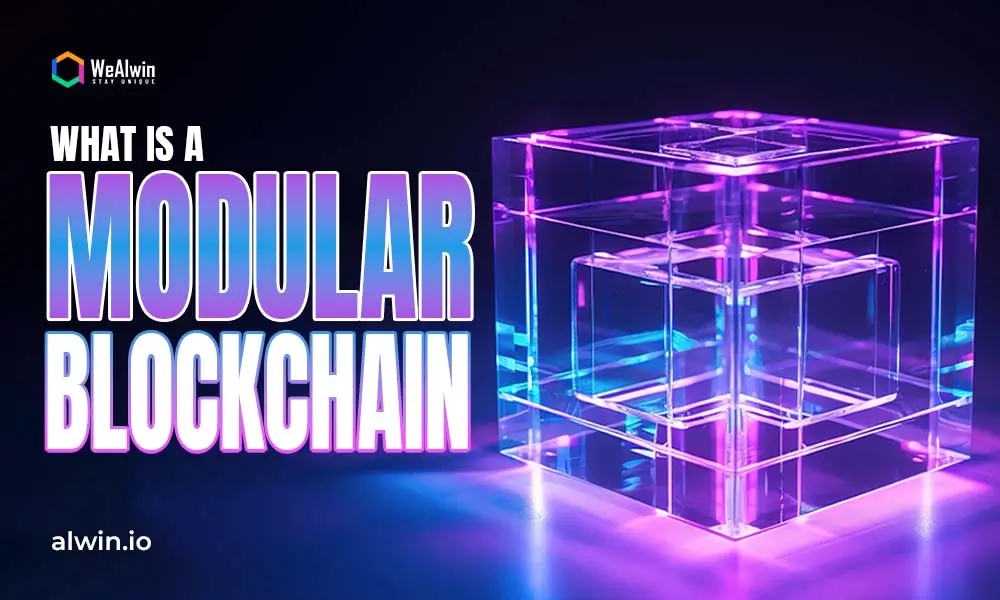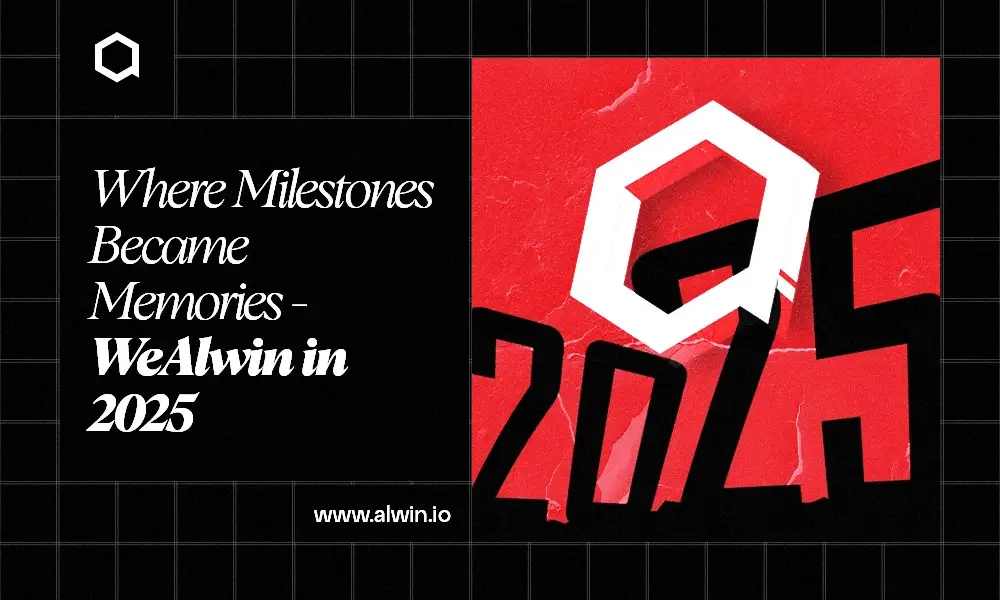Blockchain technology has changed a lot since it was first invented. Today, it is being explored for a myriad of applications, such as supply chain management and decentralized finance (DeFi) During these changes, a new term called modular blockchain is becoming popular with both tech enthusiasts and businesses.
What is modular blockchain and why is it so popular in the industry? Stop thinking much, keep reading you will find the answer in this blog.
However, as people started using blockchain more and more, there were problems with making it work well and being safe. Here, modular blockchain comes in. A modular blockchain breaks down transactions and smart contracts into smaller parts. Each module focuses on a specific function, such as data storage, consensus, or execution, which allows for greater scalability, efficiency, and customization.
According to recent news, many developers and many projects are looking into and using modular blockchain solutions. This increase is caused by the need for blockchain networks that can grow and change to meet the needs of different industries. For example, modular blockchains can handle a lot of transactions without sacrificing security or speed.
What is Modular Blockchain?
A modular blockchain is a type of blockchain that separates different parts of the blockchain into different modules. Instead of one big system, modular blockchains separate tasks like agreeing on what to do, having enough data, doing what needs to be done, and settling things.
This modular approach makes it easier to scale and adapt to different uses. For example, one module might be designed for high transaction output, while another might focus on data security or smart contract execution. By separating these functions, modular blockchains can offer more flexibility and efficiency than traditional blockchain designs.
Key Components of Modular Blockchain Architecture
Modular blockchains usually have parts that work together to do a specific job.
Consensus Layer
Data Availability Layer
Execution Layer
Settlement Layer
Let’s examine deeper into how each of these layers works and interacts within a modular blockchain.
How Does a Modular Blockchain Work?
Consensus Layer: Ensuring Agreement Across the Network
The consensus layer is in charge of validating transactions and keeping the blockchain secure. In traditional blockchains, consensus is often achieved through mechanisms like Proof of Work (PoW) or Proof of Stake (PoS), which require a lot of computational power and energy.
In a modular blockchain, the consensus layer is separate from other parts and can be improved independently. This means that different consensus protocols can be used without hurting other layers. For instance, if a blockchain network uses PoW instead of PoS, it can use less energy and be more flexible without affecting how transactions or smart contracts are done.
Data Availability Layer: Guaranteeing Access to Transaction Data
The data availability layer makes sure that everyone in the network has all the information they need for transactions and smart contracts. This layer prevents situations where information might be hidden or lost, which could make the blockchain less trustworthy.
In modular blockchains, the data availability layer can be optimized to handle large amounts of data quickly. The blockchain helps manage data better by separating it from other tasks. This makes it faster and more flexible. This layer is important for apps that need lots of data quickly, like DeFi platforms and big dApps.
Execution Layer: Processing Transactions and Smart Contracts
The execution layer is where transactions and smart contracts are executed. In traditional blockchains, execution is tightly connected to consensus and data management, which often leads to delays and limited scalability.
Modular blockchains separate execution from other functions, which makes this layer more efficient. This means that complicated calculations and smart contracts can be done without affecting the way people agree or how data is saved. The execution layer can use different virtual machines or execution environments, such as the Ethereum Virtual Machine (EVM) to execute smart contracts. By separating execution, modular blockchains can be used for more complicated and resource-intensive applications. This makes them good for a wider range of industries and use cases.
Settlement Layer: Finalizing Transactions and Maintaining the Ledger
The settlement layer is the last record of all transactions and changes made to the blockchain. This layer makes sure that transactions are recorded in the ledger once they are validated and done.
In modular blockchains, the settlement layer works independently of other layers to provide a safe and secure environment for finalizing transactions. This makes sure that the ledger stays the same and can't be changed, even if other parts of the system get better or changed. The settlement layer is important for keeping trust and transparency in the blockchain network because it is the ultimate source of truth for all recorded transactions.
Benefits of the Modular Blockchain
We will explore the key advantages of modular blockchain and how it is transforming the landscape of decentralized technology.
Scalability
Modular blockchain architecture allows each layer to be optimized separately, leading to better resource allocation and higher output. This method makes sure that the network can handle more transactions without sacrificing speed or performance. For example, the execution layer can be scaled horizontally to process more transactions at once, while the consensus layer focuses on keeping the network safe and sound.
Flexibility
Modular blockchains offer unparalleled flexibility, which makes it easier to customize and configure each layer according to specific needs and use cases. Modifying the entire system in traditional blockchains is often complicated and time-consuming for making changes or upgrading.
Improved Security
Furthermore, modular blockchains facilitate the implementation and enhancement of security protocols without affecting the entire network. The system remains protected against emerging threats and vulnerabilities by applying security patches or enhancements to specific layers.
Upgradeability
It is easier to keep the blockchain up-to-date with the latest technological advancements and industry standards with this modular design. Updates can be rolled out more quickly and with minimal disruption to the network's operations, reducing downtime and upkeep expenses.
Interoperability
The ability to seamlessly transfer information and assets between different blockchains facilitates communication and integration across various platforms. For example, a modular blockchain could easily connect with other blockchains to share transaction data, exchange tokens, or utilize shared services, such as oracles or identity verification systems.
Efficiency and Resource Optimization
Different tasks can be separated into specialized modules to enable more efficient use of computational resources. Optimizing each layer for a particular task eases the network's computational load. Modular blockchains are more environmentally sustainable than traditional blockchains because of their efficiency.
Easier Development and Deployment
Blockchain solutions can be difficult to develop and deploy, especially when dealing with monolithic architectures that require tight integration of all functions. A more compartmentalized approach is provided by modular blockchains. Developers are able to focus on building and optimizing specific layers without having to understand or modify the entire system.
As blockchain technology gets better, modular blockchain will be important for making decentralized apps and services better. It will give businesses and developers the tools they need to succeed in a digital world.
Popular Examples of Modular Blockchains
Let us explore some of the most well-known modular blockchain projects that are leading the way in this innovative space.
Polkadot
Polkadot is renowned for its modular blockchain platform. Polkadot was developed by the Web3 Foundation and led by Dr. Gavin Wood, the co-founder of Ethereum. It was made to connect many blockchains so they can share information easily.
Cosmos
Cosmos is another popular blockchain platform that can be easily connected and expanded. Cosmos wants to create an ecosystem of blockchains that can interact with each other easily. Cosmos was developed by the Interchain Foundation and its mainnet was launched in 2019.
Avalanche
Avalanche is a high-performance, scalable, and customizable blockchain platform made by Ava Labs. Avalanche was created in 2020 and is designed to be a platform for decentralized applications and enterprise blockchain deployments. It aims to offer low transaction fees, high output, and fast finalization.
Ethereum 2.0
Ethereum started as a single blockchain, but now it's called Ethereum 2.0. This means it has a more modular design. Ethereum 2.0, also known as Eth2 or Serenity, is a series of upgrades that aim to improve the scalability, security, and sustainability of the Ethereum network.
Celestia
Celestia is a new project using blockchain technology that focuses on making data available and agreeing on rules. It is designed to be a base layer for other blockchains and solve the data availability problem often faced by decentralized networks.
Understanding the power of modular blockchains is crucial for staying ahead in the rapidly evolving world of distributed technology, no matter if you're a blockchain enthusiast, software developer, or business leader.
Ending Note
As we've seen, modular blockchain technology is changing how we think about scalability, security, and flexibility in the blockchain space. Blockchains can help improve performance, create customized solutions, and make it easier for people to use them together. The modular blockchains of Polkadot, Cosmos, and Celestia are setting new standards for what blockchain technology can do.
For businesses and developers, modular blockchain is the way to go. It offers a path to create more efficient, secure, and scalable solutions that can be used for many different situations. If you want to use blockchain in your operations or make your own decentralized applications, you need experts who specialize in Blockchain Development Services. These experts can help you understand modular blockchain technology and make sure your project is solid and can grow with your needs.
Keeping informed and making smart choices about the technology you use can make all the difference. Modular blockchains are the future of decentralized solutions, and you can be part of this exciting journey toward innovation and growth with the right development services.



